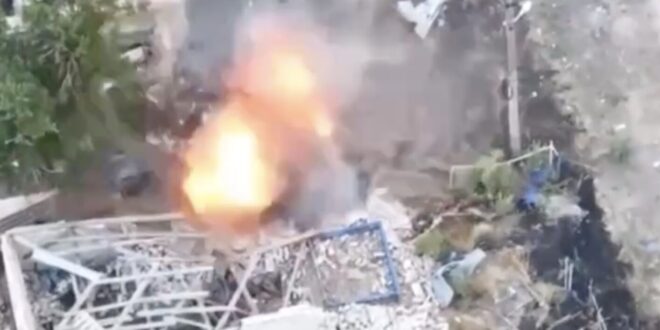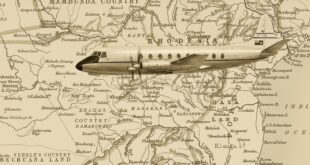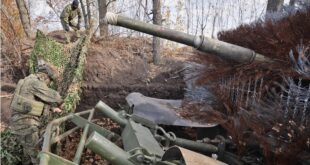How do you learn to fly a kamikaze drone? In Russia, one answer lies inside a secretive training program run by Octagon, a drone school linked to remnants of the Wagner Group. Though Wagner technically no longer exists, Octagon claimed to continue running combat drone courses in Russia, even after Wagner founders Yevgeny Prigozhin and Dmitry Utkin died in a 2023 plane crash. At this school, recruits are taught to pilot FPV kamikaze drones, training for live-attack missions. A correspondent from RFE/RL signed up for the course and documented what he saw. His name is being withheld for security reasons.
ST. PETERSBURG — I applied for Wagner’s drone course, which anyone can do, and was accepted without further questions.
The course is held is the former Wagner Center, which was recently rebranded as the Morskaya Stolitsa, or Sea Capital. The building seems empty.
There’s nowhere to sit inside the huge hall at the entrance, and I await the instructor near a desk staffed by a young female receptionist and a security guard. We were told to arrive at 11 a.m. but two of the four course participants show up late.
“I thought it was military necessity to arrive at 11 a.m. and not a second later,” I joke to spark a conversation.
READ MORE: Shotguns vs. Drones: A Clay Shooter’s Guide to Defeating Enemy Swarms
“Yeah, now we’re cadets. Everything will be regimental,” laughs Sanya, a professional surveyor who flew from the Far East of Russia to take part in the course. His superiors sent him to St. Petersburg to have him trained in the use of FPV drones. Sanya’s interest is purely professional. He wants to upskill and earn more as a surveyor; he does not want to go to war.
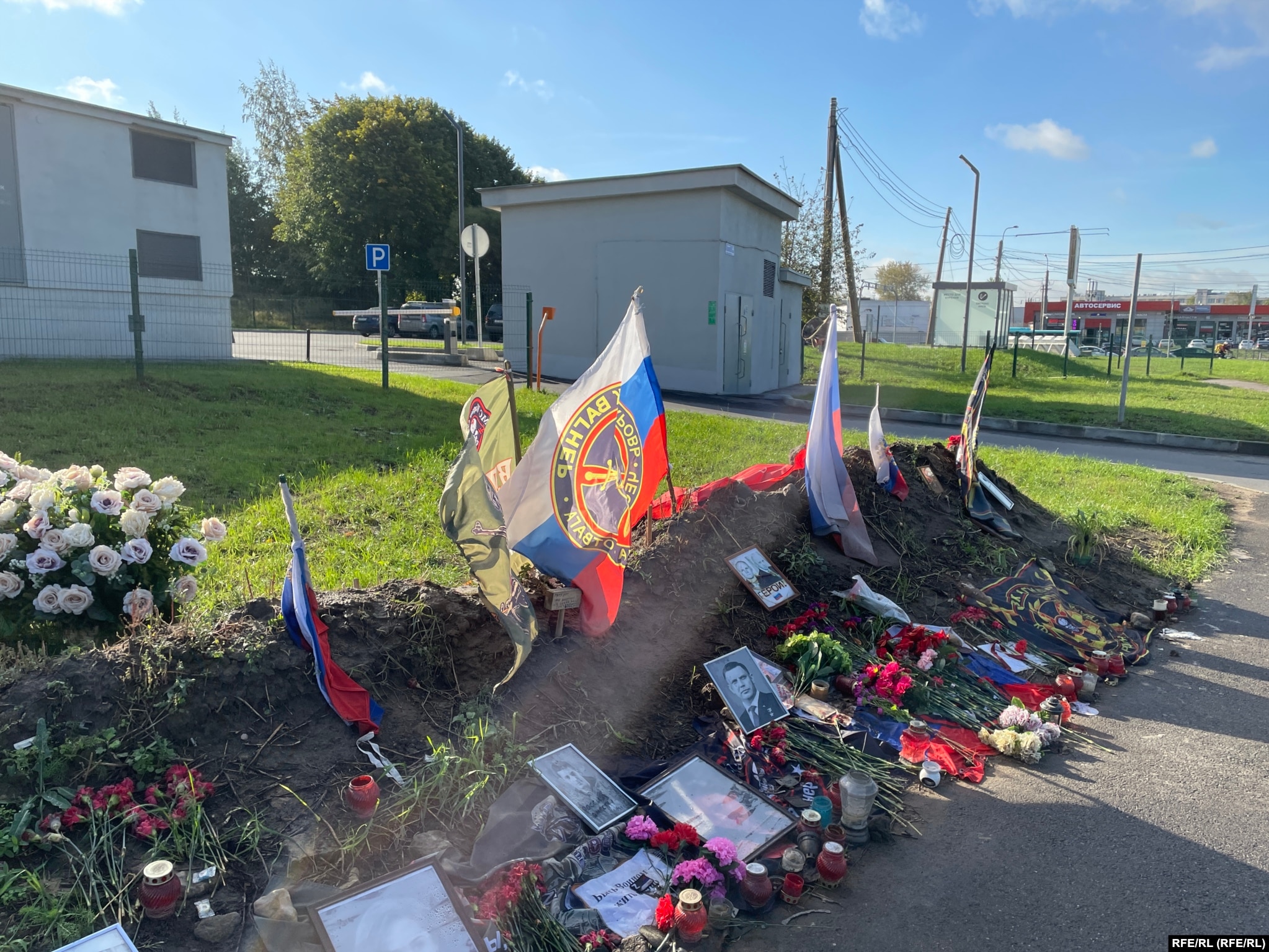
“There’s no training course on the use of FPV drones within 5,000 kilometers of where I live, so I flew here. Now that I’m here, I’ll at least go see Peterhof (a famous royal residence near St. Petersburg),” Sanya says.
While we are waiting for our instructor, the St. Petersburg locals among the group give Sanya other tips for what to see in the city. He seems most interested in the advice to see the grave of Wagner founder Yevgeny Prigozhin. It was supposed to be a joke, but he vowed to go and see it that weekend.

Yan, another student, is some kind of military assistant tasked with taking supplies such as ammunition, first-aid kits, and other equipment to frontline Russian soldiers fighting in Ukraine. Among the supplies he brings to the front are drones. But these are ordinary quadcopters, not the highly specialized FPV drones. He is the only one in our group who decided to go to war.
“Why?” I ask.
“Have you ever been shot at?” Yan responds with his own question.
Yan seems angry with the Ukrainian military for shooting at him while he was in a Russian frontline position. Later, it transpires there was more to the situation. The Ukrainian soldiers shot accurately and killed Yan’s friend.
At first, Yan says he wanted to be a medical instructor, but the training he had received was not considered sufficient for the Russian military, so he decided to become a drone operator instead.
The last of my three fellow students is Yulia. She works in the construction industry and needs drone piloting skills to monitor building sites. On the second day of the course, she fell ill and deferred her training to another date.
An instructor with the call sign Glaz (Eye) eventually appears 15 minutes after our scheduled meeting time. He leads us to the 17th floor of the building. Previously, Glaz says, they were based on the fourth floor, but now the Octagon training facility is expanding.
The courses have two options: one week with five lessons for 35,000 rubles ($350) or two weeks of 10 lessons for 70,000 rubles ($700). The shorter course is branded Assault, while the two-week version is Pro.
During the Pro course, students are taught how to assemble and operate the mass-produced Russian “Hortensia” kamikaze drone. In addition, they are sent to a training ground where, despite a regional ban on drone flights, students fly in the open.
“If there are problems, if someone comes — the police or anyone — I take full responsibility,” Glaz will later say. “You had nothing to do with it. You stood nearby, were passing by, whatever.”
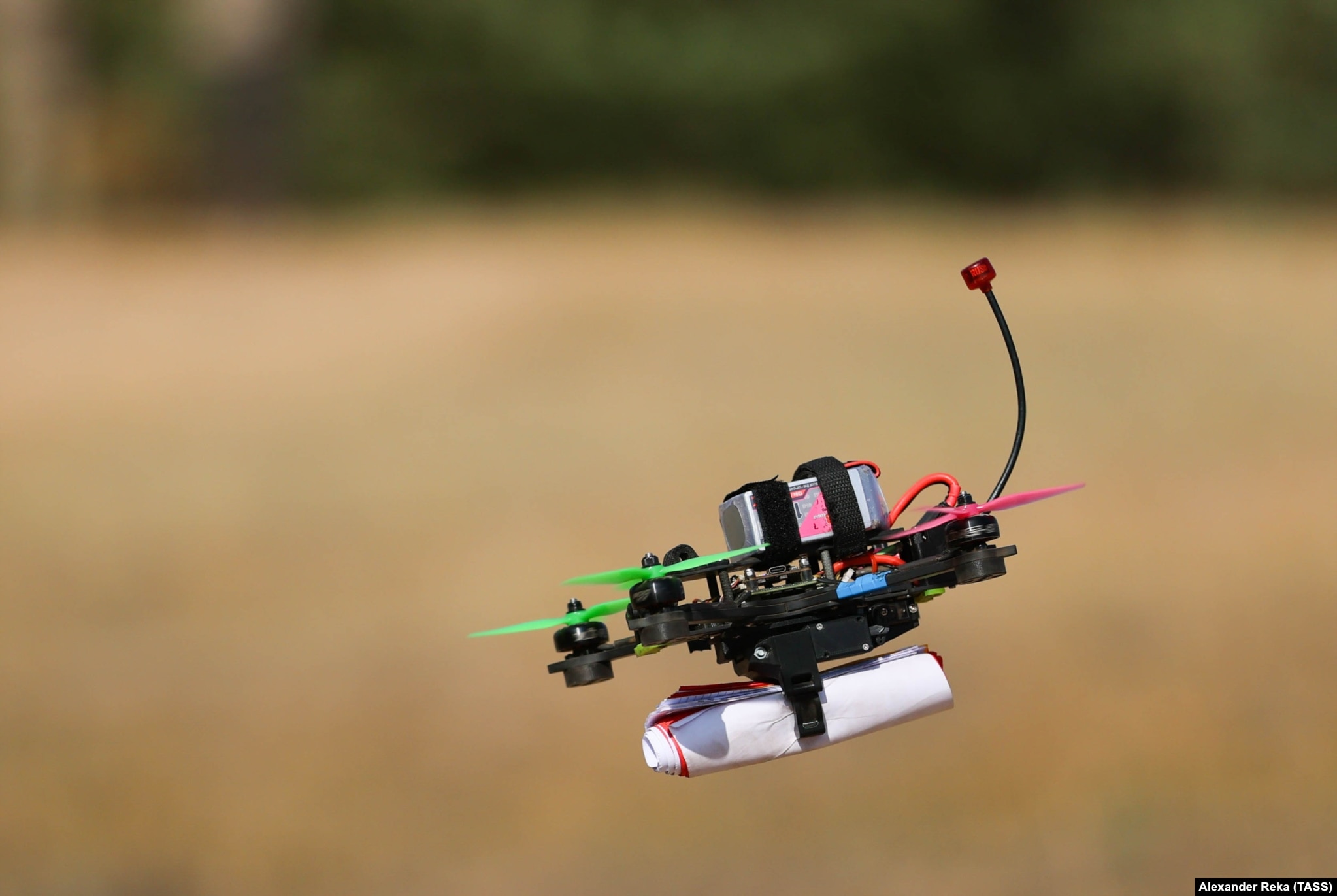
The instructors are mostly former soldiers or military volunteers. Previously, they worked with Wagner fighters at the front in Ukraine and taught them there how to use FPV drones. They did not formerly teach civilians. The instructors received funding from the now-deceased head of Wagner, Yevgeny Prigozhin.
Today, the only reminder that the Sea Capital building is connected to Wagner is an impromptu memorial featuring Wagner and tsarist-era flags, and Russian banners and flowers.
Next to the flowers are photographs of those killed in the plane crash in August in the Tver region: Wagner founder Yevgeny Prigozhin along with other Wagner commanders.
Others are also commemorated there, including Daria Dugina, the daughter of Kremlin-linked Russian nationalist Aleksandr Dugin.

Prigozhin himself once entered the training facility.
“He walked around, said hello to everyone, and was interested to see things and hear how they work,” says a young instructor with the call sign Berlin.
“Was he taught how to fly a drone?” I ask.
“No, he had a lot of other things to do.”
Berlin remembers Prigozhin with respect and sadness, but believes his fate was inevitable.
“After the ‘march of justice,'” he says, referring to the short-lived uprising by Wagner forces in June 2023, “he would never have gotten away with it. But it’s still a pity. He was a great man.”
Inside the training room, the decor looks almost like a museum. A pennant with the Bakhmut coat of arms is on display, along with a flag depicting Christ. There is even a flag with the late “military correspondent” Maksim Fomin depicted with a drone in his hands.
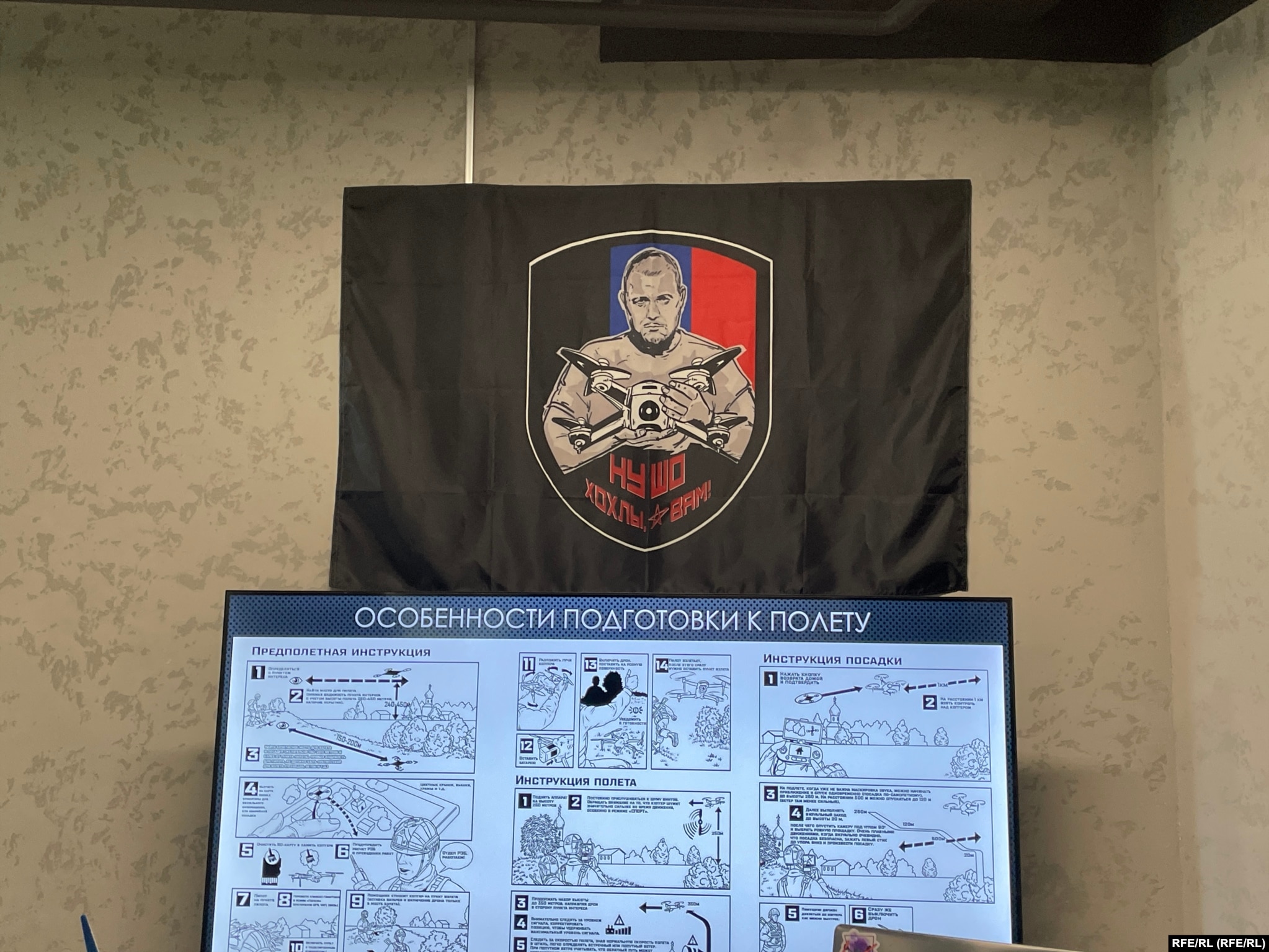
Under these flags we will undergo the theoretical part of the training.
But first come introductions. Our instructors inform us that we have all undergone some kind of background check.
“This is necessary so that someone with dubious goals doesn’t come,” Berlin tells us. “We had one guy who graduated from a flight school in Ukraine in 2018. We’re not accusing him of anything, but he was denied training, just in case.”
After introductions, Berlin makes a startling statement. If ever we find ourselves at war and think that being a drone operator is the safest profession, he says, we will soon end up dead.
“The biggest myth is that being drone operator is a safe role. To get a good connection with your drone, you need to get pretty close to the area you’ll be flying. If the enemy can identify where the drone took off from, he will target that place,” we are told.
“There is a golden rule in modern warfare: The most effective way to stop an enemy drone is to kill its operator,” he says.
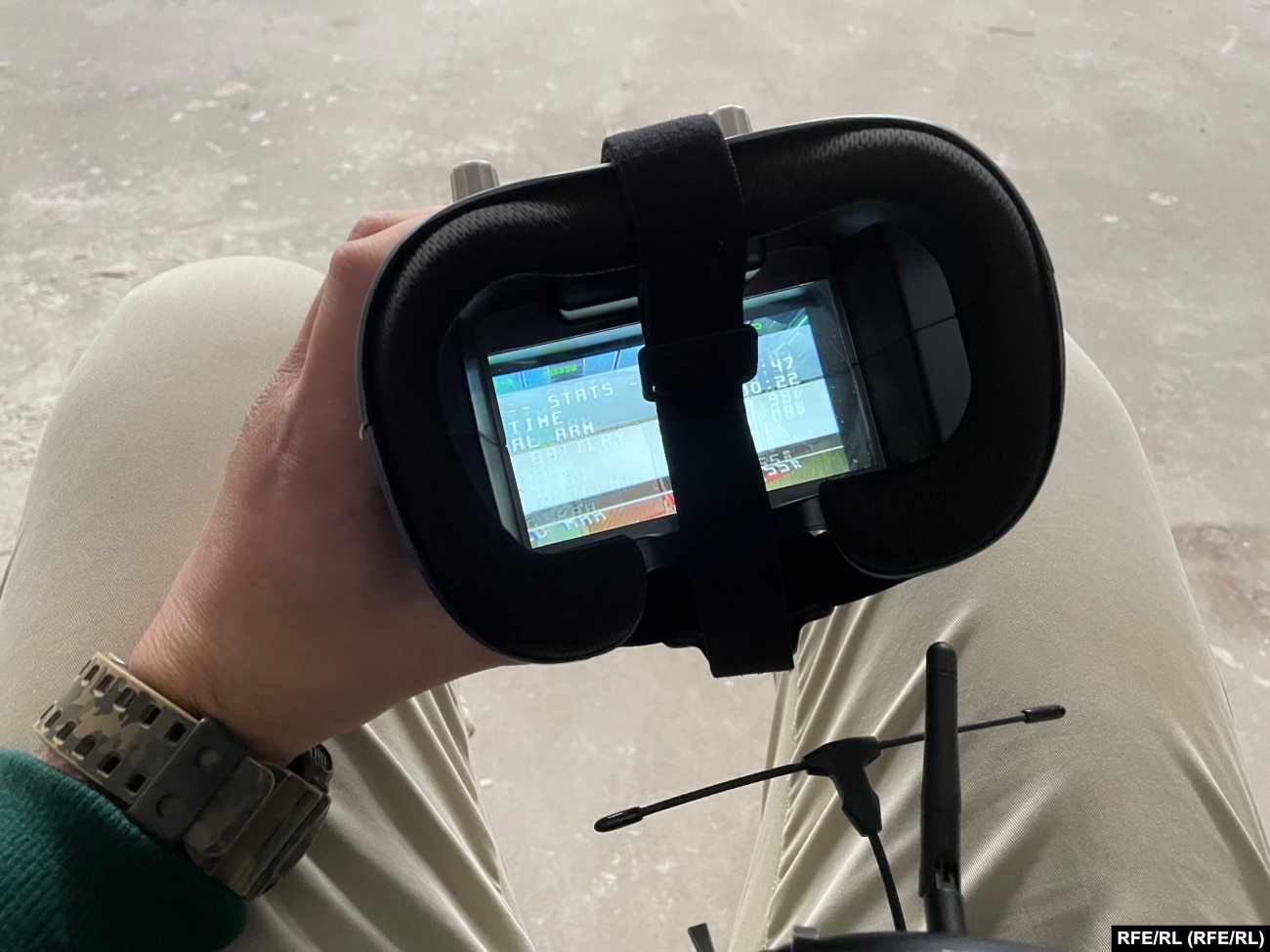
Berlin does not recommend going to war. Even after completing the Assault course, or even the Pro training, a student will not be ready for the realities of combat.
“If you are determined [to fight], then I do not advise you to enter into a contract with the Ministry of Defence,” we are warned. “Firstly, the contract will be automatically renewed. You simply won’t leave there.”
He recommends instead signing on with private military contractors.
In the FAQ section of the Wagner drone course, they make sure to separate themselves from the Russian military.
“We are a private, civilian school. Like other private schools or drone courses, we only teach people how to operate drones and do not transfer personal data to third-party organizations, including the Ministry of Defence,” it says.
Then comes a safety briefing. The drone should never take off near the operator. Artillery can target the takeoff site and a goggle-wearing drone pilot can’t easily react to what is happening around him — whether enemy soldiers are approaching or a shell is incoming.
Berlin tells us about his first acquaintance with drones. He was part of the initial Russian invasion force into Ukraine in February 2022.
“[Ukrainians] flew drones brazenly right above our heads, hovering, and watching, and we weren’t able to shoot them down,” he recalls. “Imagine a situation where you have no idea how to even fly a drone, and they already know how to drop grenades from it. We had to learn everything on the fly when we realized this was an effective new weapon.”
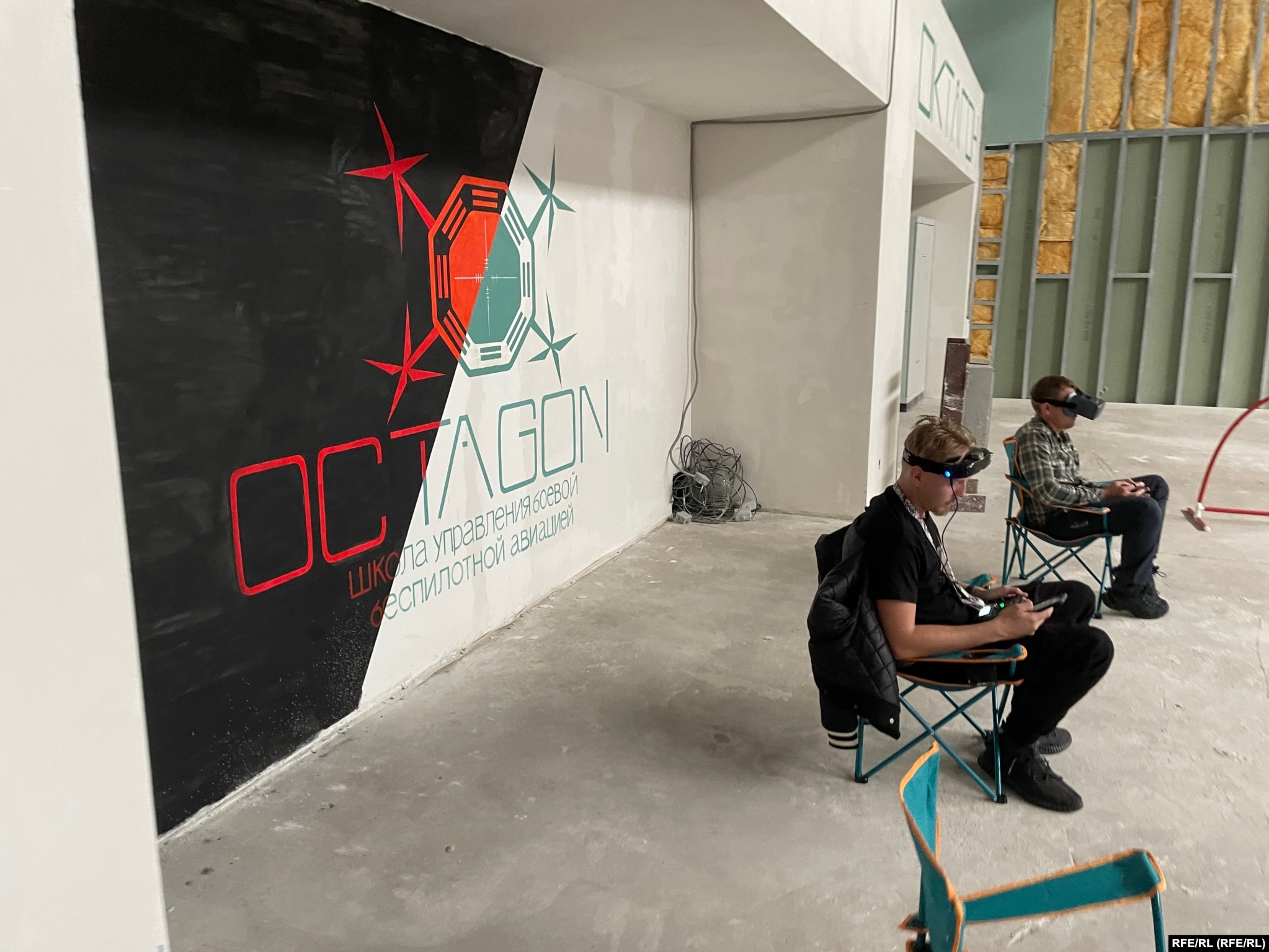
Berlin talks at length about what he saw in Ukraine. Personally, his efforts to conquer the country amounted to nothing, he says. His unit fought in the Kharkiv region.
“In the first days, our brave paratroopers were defeated, an entire platoon was captured, and others were killed,” he recalled.
“Everyone had different uniforms. Professional soldiers and those who volunteered to join the ‘special military operation’ wore modern multicam camouflage. But mobilized soldiers arrived in the old brown and green Russian uniforms,” Berlin says. “These older guys assumed if your uniform was not the same as theirs, then you were the enemy, so they shot without asking questions.
“It was fortunate for us that we fought against Ukraine’s Kraken regiment, who had dark uniforms,” says Berlin. “There were a lot of problems with the mobilized soldiers. They arrived in Soviet helmets and fought with tsarist-era Mosin rifles.”
The first day ended with flight simulators. It didn’t go well for me, but the other students flew well. Even the instructors were surprised at their skill level.
“Don’t worry. Tomorrow will be better. You’ll develop muscle memory. You’ll fly tomorrow,” Glaz reassured me.
With this optimistic send-off, we left the building formerly known as the Wagner Center. Turning to look back, Yan pointed out something that proved impossible to unsee.
“Guys, the building is cool inside, but from this angle, I’m confused. Don’t you think it looks like a toilet?”
Yan crossed himself at the memorial to the Wagner commanders and got into his matte black Mercedes. Sanya called a taxi.

The second day of training also began with theory. We learned how to adjust artillery fire using maps and learned the symbols on a military map — tank, infantry vehicle, dugout, etc.
Glaz then described various anti-drone guns and other jamming devices.
Glaz was formerly a Russian soldier. He was in Nagorno-Karabakh during the conflict there in 2020. That was when Glaz first saw drones being used in combat.
“The Azerbaijani Army had Turkish Bayraktars. It was an amazing thing for us,” he recalls.
After his contract ended, Russia invaded Ukraine. Glaz wanted to volunteer but claims red tape ended his ambitions to join the invasion.
“I was getting ready. I came to the military enlistment office to sign a contract, but they listed so many requirements I needed to meet and documents I had to provide that I just gave up,” he says.
In the second part of the lesson, Glaz talked about military procedures if you heard, saw, or were told about a possible drone. Everything is quite banal. First of all: Report to the commander.
We were also taught to conduct reconnaissance and monitor social networks that may give information about concentrations of enemy troops. One example featured a screenshot of a resident of the eastern Ukrainian city of Dnipro who wanted to help the Ukrainian military. She posted that there are many wounded in two particular hospitals and called for humanitarian aid to be taken there. Such information can be used to “destroy manpower,” we were taught.
Another form of intel gathering is what the instructor called “field reconnaissance,” such as asking people in a bar what the situation is like in the area.
Then they showed us how bomblets are attached to drones that drop explosives. They are most often loaded with 40 mm fragmentation grenades, but hand grenades are also used.
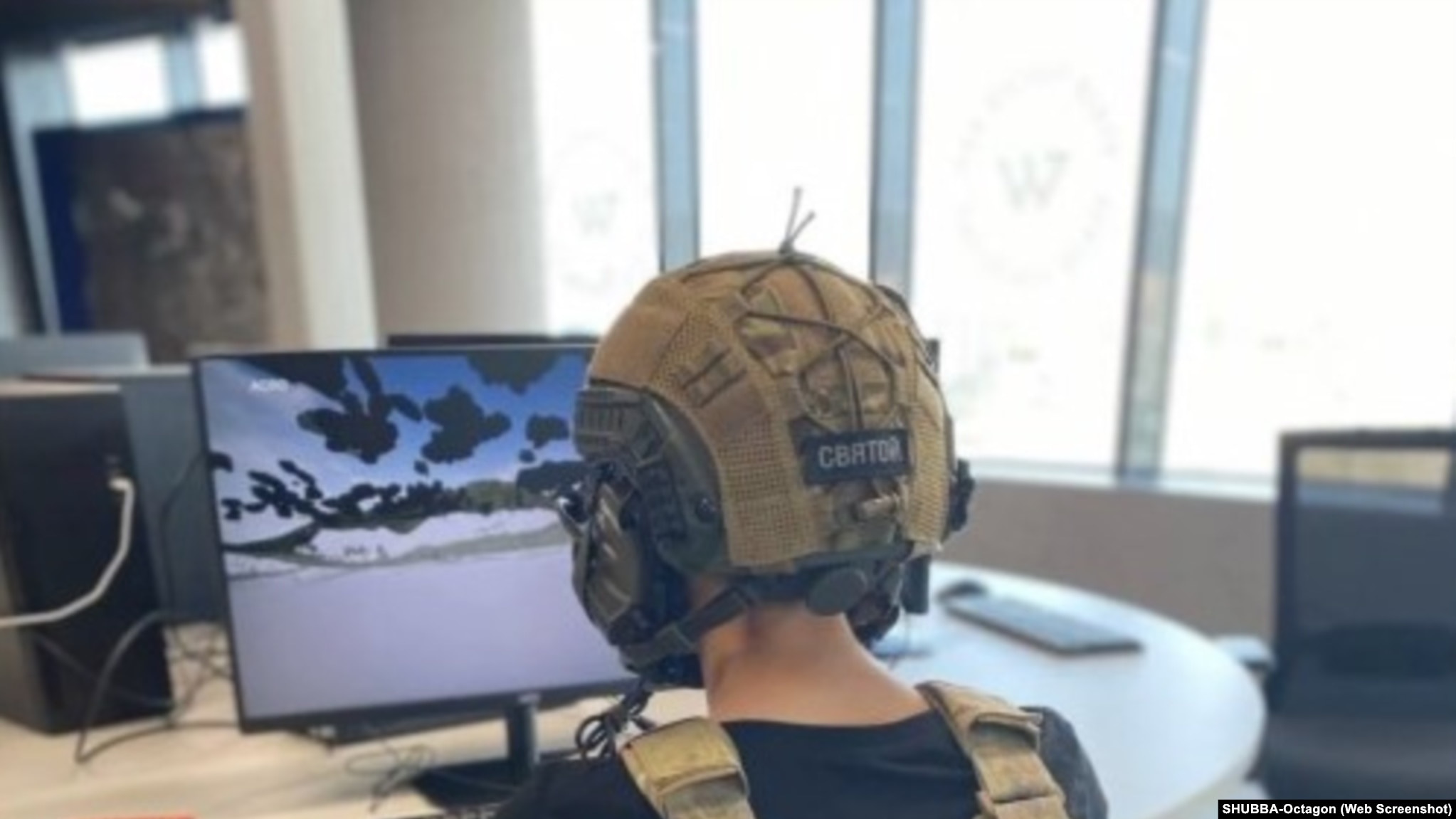
The FPV drones we learn to fly are not generally used to drop munitions and return. Instead, they are built with the purpose of being flown into targets and destroyed when the payload detonates. Or as one instructor put it, “Reach your target and cease to exist.”
The kamikaze drones are assembled at the front lines and their explosive payloads can be improvised. One example we learn about is a hand grenade in a glass. Before flight, the pin is pulled out, then the grenade is jammed into a glass, which keeps the “spoon” of the grenade in place until the glass is broken on impact.
The glass method is not very reliable, Berlin says. One of his commanders died attempting to operate one of the improvised weapons.
Loaded with fresh information, we return to the drone simulator once more. My fellow students had already mastered a complex program that involved various scenarios where the computer simulated the drone running out of battery, flying with damage, and crashing. They now wanted more.
“Isn’t there a combat simulator?” Yan asked
Sanya also wanted to target virtual tanks and blow things up, but Berlin disappointed them with the news that there is no such simulator.
On the last day, we were finally able to get our hands on real drones. Small, almost indestructible, Mobula FPV quadcopters.
We then fly them and run around changing batteries (one Mobula battery is enough for only 10 to 15 minutes of flight) as instructors walk around the room, occasionally swiping at the drones to up the ante.
At the end of the final lesson, the class breaks for pizza. Then I receive my certificate. After taking photos together, I leave. Sanya and Yan will continue with an intensive Pro course.
Sanya wanted to extend his training because he found it useful, while Yan wanted to be more effective on the battlefield. He is already in touch with a military commander. People are waiting for him at the front lines.
From RFE/RL’s North.Realties.
 Soldier of Fortune Magazine The Journal of Professional Adventurers
Soldier of Fortune Magazine The Journal of Professional Adventurers


